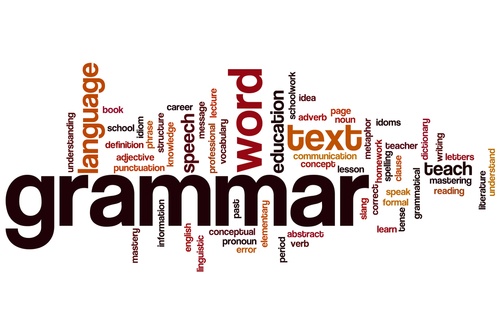Present Continuous - kiedy go używać?
Zacznijmy od zastosowania czasu Present Continuous. Istnieją cztery sytuacje, w których należy skorzystać z tej struktury gramatycznej. Oto one:
- kiedy mówimy o czynnościach odbywających się w chwili mówienia, np. w tym momencie oglądasz telewizję i kogoś o tym informujesz: I’m watching TV.
- mówiąc o tak zwanej “okolicy czasu mówienia”, dotyczy to czynności, które z założenia są tymczasowe, rozpoczęły się jakiś czas temu i wkrótce zostaną zakończone. Nie wykonujemy ich jednak w chwili mówienia. Wyobraź sobie, że odwiedziłeś swoich znajomych i opowiadasz im o tym, że remontujesz właśnie swoje mieszkanie. Nie masz w chwili mówienia pędzla czy wiertarki w ręku, siedzisz i pijesz kawę, ale o remoncie opowiesz w czasie Present Continuous: We are renovating our house.
- plany i ustalenia na najbliższą, określoną przyszłość. W tym przypadku ważne jest podanie czasu, na kiedy zaplanowano wykonanie danej czynności i nie może to być termin bardzo odległy. Dodatkowo, czynność ta musiała być uprzednio zaplanowana i ustalona, czyli np. kupiłeś już bilety do kina lub umówiłeś się z koleżanką: Margaret and I are going to the cinema on Saturday.
- tutaj mała niespodzianka. Czas Present Continuous jest używany w przypadku czynności … powtarzalnych. Jednak tylko wtedy, kiedy uważamy je za irytujące i dodamy słowo “always”. Jeśli więc twój współlokator ma tendencje do zostawiania brudnych naczyń na stole a ciebie to denerwuje, możesz wyrazić swoje pretensje zdaniem: Why are you always leaving dirty dishes on the table?!
Należy także pamiętać, że są sytuacje, kiedy Present Continuous nie może być użyty, mimo że zaistniała któraś z powyższej opisanych okoliczności. Dzieje się tak w przypadku czasowników statycznych - z nimi używaj Present Simple.
Czasowniki statyczne: be, believe, belong, feel, hate, have, heat, know, like, love, mean, need, prefer, realise, recognise, remember, want, wish, suppose, think, understand.
Jak wszyscy wiemy, język angielski kocha wyjątki. Oto kilka sytuacji, kiedy czasowniki statyczne mogą być użyte z czasem teraźniejszym ciągłym:
- czasownik “to be” - kiedy chcemy podkreślić, że ktoś zachowuje się w określony sposób w danej chwili, a nie że taki generalnie jest, np.: John, you are being very impolite today! What’s the matter?
- czasownik “think” w znaczeniu “zastanawiać się nad czymś” np. Don’t talk to me now, please. I’m thinking how to solve this problem. W znaczeniu “sądzić, mieć jakąś opinię”, czasownik “think” jest statyczny.
- czasownik “smell” w znaczeniu “wąchać”, np. She’s smelling the roses her her boyfriend gave her. W znaczeniu “pachnieć, śmierdzieć, wydzielać zapach”, czasownik “smell” jest statyczny.
- czasownik “look” w znaczeniu “patrzeć”, np. Why are you looking at me? I don’t know anything about that. W znaczeniu “wyglądać”, czasownik “look” jest statyczny.
- czasownik “see” w znaczeniu “mieć umówioną wizytę/spotkanie” np. z lekarzem, adwokatem czy przełożonym, np. I’m seeing my lawyer on Friday.
- czasownik “taste” w znaczeniu “próbować, jaki coś ma smak” np. Mary is tasting the soup to find out if it’s salty enough. W znaczeniu “smakować, mieć jakiś smak”, czasownik “taste” jest statyczny.
- czasownik “feel” w znaczeniu “dotykać czegoś, sprawdzać, jakie coś jest w dotyku” np. Peter is feeling the fabric to check if it’s soft enough for children’s clothes. W znaczeniu “być jakieś w dotyku”, czasownik “feel” jest statyczny.
Present Continuous - budowa
Czas teraźniejszy ciągły w języku angielskim w języku angielskim składa się z dwóch elementów: odmienionego czasownika “to be” w roli operatora oraz czasownika z końcówką -ing.
Dodając końcówkę -ing, należy pamiętać o sytuacjach szczególnych:
- czasowniki kończące się na -e po spółgłosce np. dance - odrzucamy -e i dodajemy -ing: dance - dancing,
- czasowniki jednosylabowe, których trzy ostatnie litery to spółgłoska - samogłoska - spółgłoska, np. sit - podwajamy ostatnią literę, np. sit - sitting. Podobnie dzieje się w przypadku czasowników dwusylabowych, kiedy akcent pada na drugą sylabę, np. travel - travelling.
Zdania twierdzące w Present Continuous
“Wzór” na zdanie twierdzące w czasie Present Continuous wygląda następująco:
podmiot + odmieniony czasownik “to be” + orzeczenie+ing
- I’m reading a great book now.
Jack is meeting us in front of the cinema tonight.
You are always losing your keys!
Zdania przeczące w Present Continuous
Przeczenia tworzymy dodając “not” do operatora. “Wzór” na zdanie przeczące w czasie Present Continuous wygląda więc następująco:
podmiot + odmieniony czasownik “to be”+ not + orzeczenie+ing
- I’m not sleeping! Don’t turn the TV off, please.
Jack isn’t going to the cinema with us.
You aren’t working at the moment, are you?
Pytania w Present Continuous
Pytania w czasie Present Continuous, podobnie jak w przypadku samego czasownika “to be”, tworzymy poprzez inwersję, czyli zamianę miejscami podmiotu i operatora. “Wzór” na pytanie w czasie Present Continuous wygląda tak:
(Wh -) odmieniony czasownik “to be” + podmiot + orzeczenie+ing
- Are your parents sitting in the kitchen now?
What are you reading?
Where is she going?
Podsumowanie - kiedy używamy czasu Present Continuous?
Czasu present Continuous używamy mówiąc o:
- kiedy mówimy o czynnościach odbywających się w chwili mówienia,
- o czynnościach, które rozpoczęły się jakiś czas temu i wkrótce zostaną zakończone. Nie wykonujemy ich jednak w chwili mówienia,
- planach na najbliższą określoną przyszłość, która była uprzednio zaplanowana i ustalona,
- czynności powtarzalnych, które uważamy za irytujące - dodamy wtedy słowo “always”;
Chesz poznać więcej informacji o czasie Preseny Continuous? Wejdź na stronę czas Present Continuous.
Zapraszamy do odwiedzania naszego bloga. Jeszcze w tym tygodniu - Present Simple.
Potrzebujesz lepiej znać angielski?
Chcesz dodatkowych wskazówek?
ENGLISH VERSION
When to use Present Continuous tense?
One of the four present tenses in the language of the British is Present Continuous. English is famous for the big number of grammar structures used to express the past, the present and the future, which might be overwhelming for those who only start to learn this language. It’s not as black as painted, though. English tenses - their structure and usage - are quite logical and not so difficult to master. Today let’s have a closer look at Present Continuous, also known as Present Progressive tense.
Present Continuous - when to use it?
Why don’t we begin with the usage of Present Continuous tense. There are four situations when this grammar structure should be applied. They are as follows:
- when we are talking about situations happening at the moment of speaking, e.g. you are watching TV and at the same time you are telling somebody about that: I’m watching TV.
- when you are referring to the so-called “time around the time of speaking”, it refers to actions that are temporary, started some time ago and will be finished soon. You are not doing them at the very moment of speaking, though. Imagine that you are visiting a friend and you are telling them that you are renovating your flat. However, you are not holding a paintbrush or a drill while talking - you are sitting comfortably and having a cup of coffee. Yet, you should use Present Continuous: We are renovating our house.
- when talking about plans and arrangements for the nearest, specified future. It is important to state the time for which the action is planned and it can’t be too far in the future. Additionally, the action needs to planned beforehand and arranged, i.e. you have already bought cinema tickets or asked your friend out: Margaret and I are going to the cinema on Saturday.
- and a small surprise for you here. Present Continuous is also used for … repetitive actions. However, only if you find them irritating and you also use the word “always”. So, if you flatmate tends to leave dirty dishes on the table and you get angry about that fact, you may express your emotions by saying: Why are you always leaving dirty dishes on the table?!
You need to remember that there are situations when Present Continuous cannot be used even though some of the above described circumstances took place. It happens when stative verbs occur - only Simple tenses should be used with them.
Stative verbs: be, believe, belong, feel, hate, have, heat, know, like, love, mean, need, prefer, realise, recognise, remember, want, wish, suppose, think, understand.
As we all know, English love exceptions. These are some situations, when stative verbs can be used with Present Continuous tense:
- “to be” - when you want to emphasise that somebody is behaving in a given way and not that they are like that all the time, eg. John, you are being very impolite today! What’s the matter?
- “think” in the meaning “considering something” eg. Don’t talk to me now, please. I’m thinking how to solve this problem. In the meaning “to have an opinion” - “think” is a stative verb.
- “smell” in the meaning “check the smell of something”, eg. She’s smelling the roses her her boyfriend gave her. In the meaning “to give out smell, to have odour” - “smell” is a stative verb.
- “look” in the meaning “stare, have a look at” eg. Why are you looking at me? I don’t know anything about that. In the meaning “to have certain looks” - “look” is a stative verb.
- “see” in the meaning “to have an appointment” eg. with a doctor, a lawyer or your manager: I’m seeing my lawyer on Friday.
- “taste” in the meaning “trying what something tastes like” eg. Mary is tasting the soup to find out if it’s salty enough. In the meaning “to have a certain taste” - “taste” is a stative verb.
- “feel” in the meaning “touch something” eg. Peter is feeling the fabric to check if it’s soft enough for children’s clothes.
Present Continuous - structure
Present Continuous is made up of two elements: the proper from of the verb “to be” as an auxiliary verb and a verb with -ing ending.
When adding -ing to a verb, you need to bear in mind some special cases:
- verbs ending in -e after a consonant eg. dance - drop the -e and add -ing: dance - dancing
- one-syllable verbs ending in consonant - vowel - consonant. eg. sit - double the last letter: sit - sitting. The same happens in case of two-syllable verbs with the accented second syllable, eg. travel - travelling.
Positive sentences
The “formula” for positive sentences in Present Continuous looks like that:
subject + to be + verb+ing
e.g. I’m reading a great book now.
Jack is meeting us in front of the cinema tonight.
You are always losing your keys!
Negative sentences
Negative sentences are made by adding “not” to “to be”:
subject + to be + not + verb+ing
- I’m not sleeping! Don’t turn the TV off, please.
Jack isn’t going to the cinema with us.
You aren’t working at the moment, are you?
Questions
Questions in Present Continuous, just like in case of the verb “to be” itself, are made by inversion, i.e. switching places of the subject and the auxiliary verb:
(Wh-) to be + subject + verb+ing
- Are your parents sitting in the kitchen now?
What are you reading?
Where is she going?
Visit our blog! Later this week you will find a post on Present Simple here :)
Potrzebujesz lepiej znać angielski?
Chcesz dodatkowych wskazówek?







